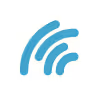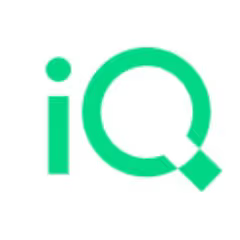Rattle Alternatives
This article compares 10 Rattle alternatives. Get a direct look at features, pricing, and use cases to find the best tool for your team.

You might use Rattle for good reasons. The tool is helpful when you need sales alerts in Slack or want to keep Salesforce data clean. Many teams use it to stay on top of deals and improve data hygiene from their chat app.
However, some users note that the setup can be complex or that notifications are occasionally delayed. This might be why you are looking for an alternative. We analyzed the top Rattle alternatives based on G2 reviews to help you choose. Let's get started.
Consider 11x for Your Sales Team
If you want to support your sales team, consider digital workers. 11x provides AI agents to handle tasks. They can update your CRM, log activities, and manage follow-ups. This approach lets your team focus on sales.
At 11x, we offer a GTM platform that uses AI agents to manage your sales process. Our agent, Alice, finds prospects, runs outreach on email and LinkedIn, and keeps your CRM updated.
Another agent, Julian, qualifies inbound leads and books meetings. Our platform unifies data enrichment, outreach, and email warmup, so you do not need separate point solutions for these tasks.
Rattle Alternatives
Below is a detailed breakdown of the top Rattle alternatives. We examine each tool's pricing, features, and its specific advantages and disadvantages to help you choose.
1) Clari
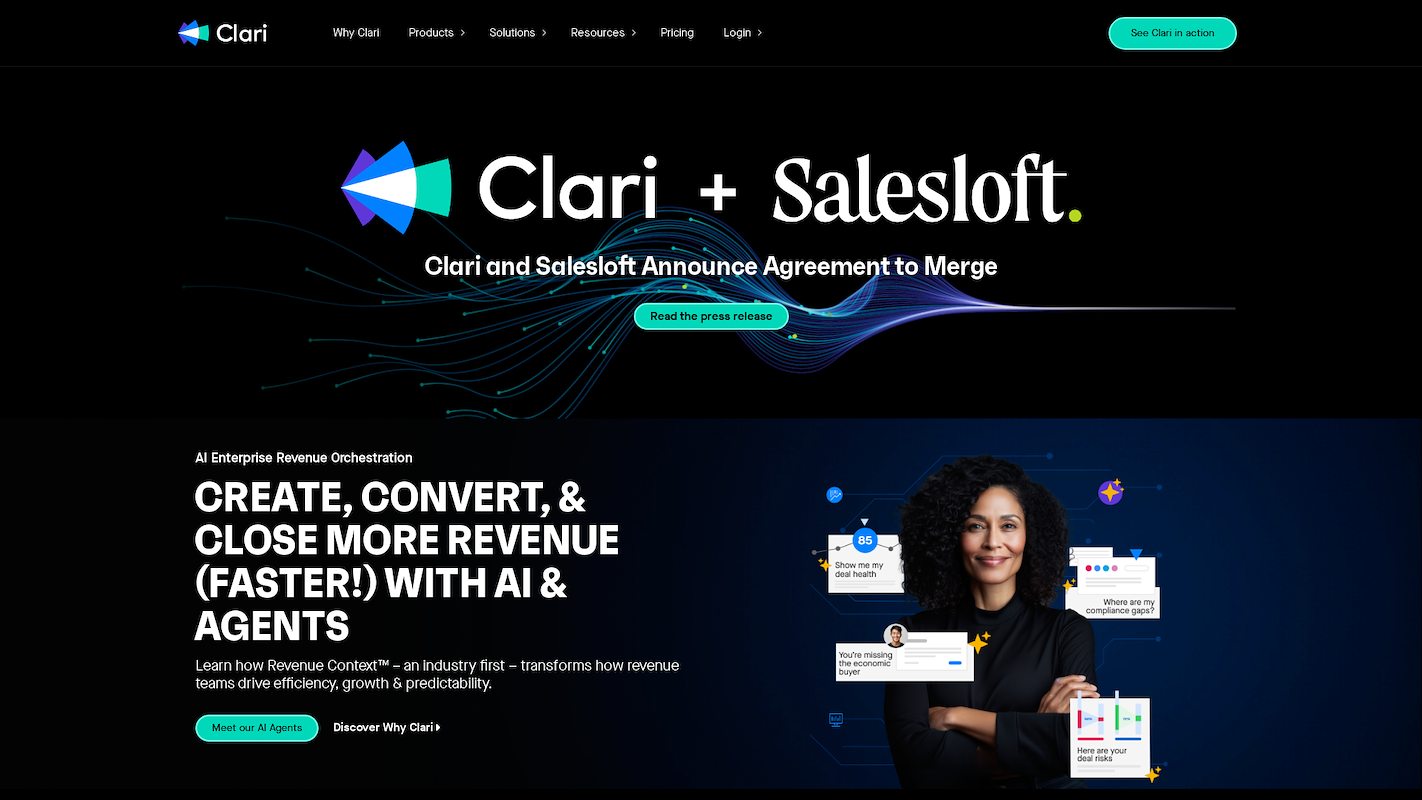
Clari is a Revenue Orchestration platform that uses AI to help teams close revenue. It ingests signals from CRM and email to provide data quality and predictive insights. The system automates workflows across the entire revenue process.
For sales teams, it automatically captures activity and gives AI-driven guidance on next steps to accelerate deals. Managers get real-time visibility for pipeline inspection and to help coach their teams.
Clari's Main Features
- Powers predictions, recommendations, and generative AI use cases with an embedded artificial-intelligence layer called RevAI.
- Provides a unified, time-series revenue data store known as the Revenue Database (RevDB).
- Offers conversation intelligence and coaching from call recordings through its Copilot module.
- Facilitates buyer collaboration and the creation of mutual action plans with its Align module.
How Clari Compares to Rattle
Average Review score: 4.6/5 stars based on 5,464 G2 reviews.
- Clari provides live forecasting and predictive analytics for the entire revenue process. This offers a strategic view, while Rattle focuses on operational alerts within Slack.
- The platform uses an AI layer to generate predictions and recommend next steps on deals. This is different from Rattle, which sends notifications based on predefined triggers in the CRM.
- It includes conversation intelligence to analyze call recordings and help with sales coaching. Rattle does not offer a comparable feature for sales performance analysis.
- Clari acts as a full revenue operations platform with features like a dedicated revenue database. In comparison, Rattle is a specialized tool that connects Salesforce to a chat application.
Potential Downsides of Clari vs. Rattle
- Clari is a comprehensive revenue platform, so its setup can be more complex. In contrast, Rattle is a specialized tool for Slack alerts, which may be simpler to implement for teams with that specific need.
- The platform's main purpose is not chat-based alerts. Rattle, however, is built to manage Salesforce data and send notifications within Slack, which provides a more focused user experience for that task.
- For teams that only require Salesforce-to-Slack integration, Clari's wide range of features might be excessive. Rattle offers a more targeted solution that can be more cost-effective for this specific purpose.
Pricing and Cost-Effectiveness
Clari does not publish its pricing, but as a comprehensive platform, it likely has a higher cost than Rattle's more specialized tool. For the most accurate information, we recommend visiting Clari's official website to request a quote.
2) Gong
Gong is a revenue intelligence platform. It records and analyzes customer interactions across phone, email, and web conferencing. The system provides insights into deals and team performance, helping you understand your customer conversations.
Gong's Main Features
- Analyzes sales calls and emails to surface insights on deal risks and opportunities.
- Provides visibility into the sales pipeline with data-backed forecasting.
- Offers tools for sales coaching based on the performance of individual team members.
- Delivers market intelligence by tracking competitor mentions and market trends in conversations.
How Gong Compares to Rattle
Average Review score: 4.7/5 stars based on 6,271 G2 reviews.
- Gong analyzes conversations to provide strategic insights. Rattle, in contrast, focuses on operational tasks by sending CRM-based alerts to Slack.
- The platform's main purpose is revenue intelligence. Rattle is a tool for workflow automation between Salesforce and a chat application.
- Gong offers sales coaching features by analyzing interaction data. Rattle does not have a comparable function for performance analysis.
- Gong's forecasting uses data from actual customer conversations. Rattle's notifications are based on predefined triggers from CRM data fields.
Potential Downsides of Gong vs. Rattle
- Gong is a broad platform, so its implementation can be more involved than Rattle's. Teams with a specific need for Slack alerts may find Rattle simpler to adopt.
- The platform's features may be excessive for teams that only need to sync their CRM with Slack. Rattle provides a more focused solution for that use case.
- Gong's price point is generally higher, reflecting its wide feature set. Rattle can be a more cost-effective choice for its specific function.
Pricing and Cost-Effectiveness
Gong does not provide public pricing information. The cost is typically based on the number of users. For accurate pricing, you should contact Gong's sales department to get a custom quote for your team.

Gong is a revenue AI platform that centralizes workflows from prospect outreach to renewal. It uses AI agents to automate tasks and offers insights for deal execution and pipeline management. The platform supports sales engagement at scale.
It also provides tools for AI-based sales guidance and representative ramp-up. Over 4,500 companies use Gong to increase win rates, grow deal size, and improve revenue per rep.
Gong's Main Features
- Automates tasks and surfaces next-best actions using more than 12 domain-specific AI agents.
- Prioritizes and personalizes outreach with an AI-guided sales engagement tool.
- Automates data capture, mapping, cleansing, and protection to enrich CRM records.
- Plugs into an existing tech stack and enriches systems with its data via more than 250 integrations.
How Gong Compares to Rattle
Average Review score: 4.8/5 stars based on 6,247 G2 reviews.
- Gong analyzes customer calls and emails to find risks and opportunities. This provides a deeper view into deal health compared to Rattle, which sends alerts based on CRM data.
- The platform includes sales coaching tools that use performance data from recorded calls. Rattle does not have a similar function for representative development.
- Gong's forecasting uses data from actual customer conversations for potentially more accurate predictions. In comparison, Rattle's notifications depend on predefined triggers from CRM data fields.
- The tool delivers market intelligence from competitor mentions and trends it finds in conversations. Rattle is not built for this type of analysis and focuses on internal workflow automation.
Potential Downsides of Gong vs. Rattle
- Gong does not focus on two-way sync between a CRM and a chat application. In contrast, Rattle lets teams update Salesforce records directly from Slack, which can be faster for simple data entry tasks.
- The platform is not designed to send granular, real-time operational alerts from a CRM into a chat tool. Rattle excels at this, sending specific notifications for deal updates or data hygiene reminders directly into Slack.
- Some teams may find Gong's wide feature set excessive if they only need to connect their CRM to Slack. Rattle presents a more focused and often more cost-effective choice for that specific function.
Pricing and Cost-Effectiveness
Gong does not publish its pricing, but its perceived cost is high, reflecting its comprehensive feature set. For the most accurate and up-to-date pricing information, we recommend visiting Gong's official website.
3) People.ai
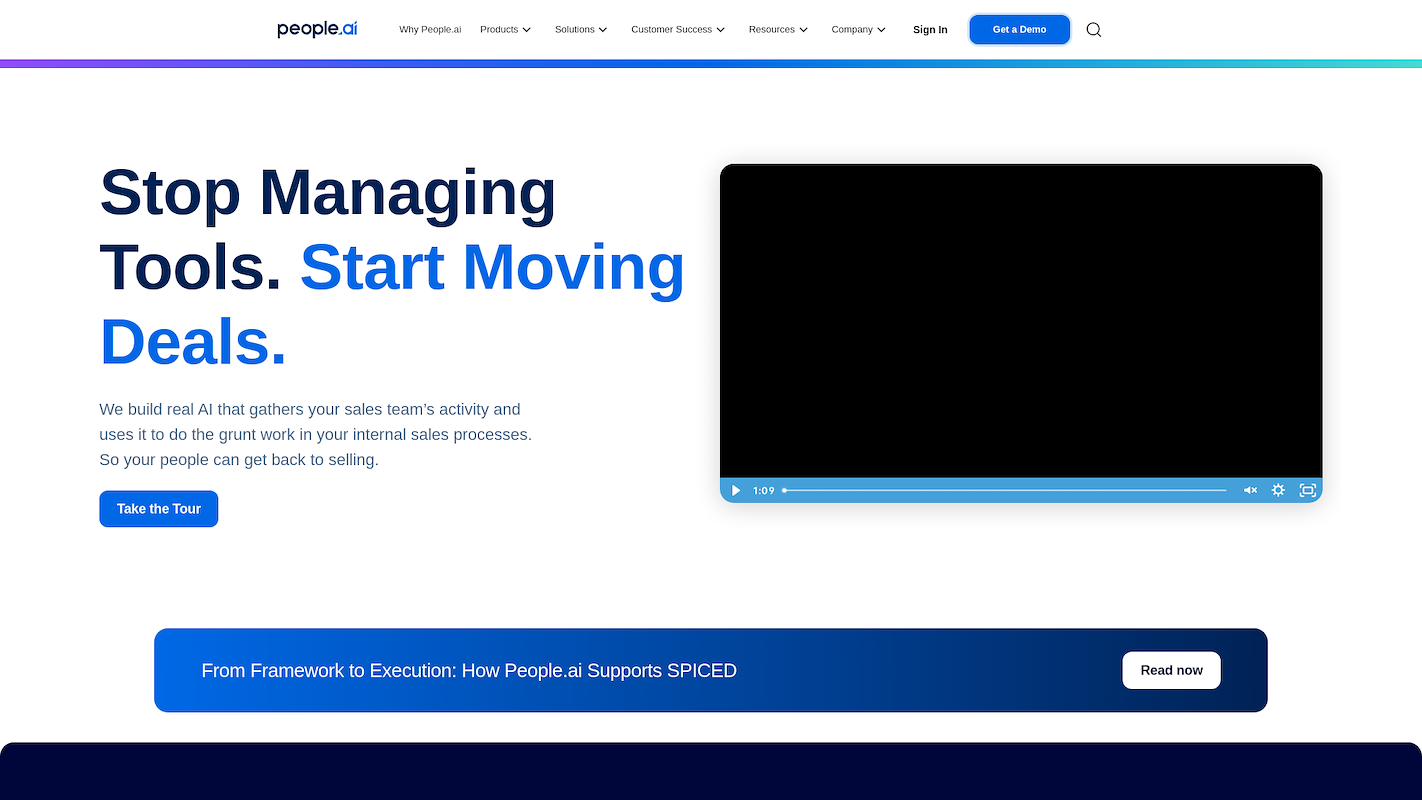
People.ai is a revenue intelligence platform. It captures seller activities like meetings and emails, then unifies the data with your CRM. The system automates manual sales work to help teams focus on deals instead of tools.
It supports account strategy, opportunity qualification, and deal health analysis. The platform also helps improve forecast accuracy and enforce a consistent sales process for your team.
People.ai's Main Features
- Collects over 1.8 million sales activities per hour and unifies the data across GTM tools.
- Generates automated, data-backed account plans to align pre-sale and post-sale teams.
- Automates deal qualification and visualizes deal health to focus reps on opportunities most likely to close.
- Combines pipeline management and forecasting using custom AI agents trained on a customer's revenue model.
How People.ai Compares to Rattle
Average Review score: 4.4/5 stars based on 463 G2 reviews.
- People.ai automatically captures sales activities from sources like emails and calendars to enrich CRM data. This provides a more complete activity log compared to Rattle, which sends alerts based on data already in the CRM.
- The tool offers predictive analytics to score opportunities and forecast revenue. This is different from Rattle, which operates on predefined rules to send notifications instead of generating predictive insights.
- It helps create automated, data-driven account plans to align sales teams on strategy. Rattle does not have a comparable feature for strategic account planning, as it focuses on operational alerts for specific deals.
- People.ai provides visualizations of deal health, which helps teams prioritize their efforts on the most promising opportunities. In comparison, Rattle sends notifications about deal updates but does not offer a consolidated health score or visual analysis.
Potential Downsides of People.ai vs. Rattle
- People.ai does not offer a deep, two-way integration with chat tools. In contrast, Rattle allows users to update CRM records directly from Slack, which some teams may find more efficient for quick data entry.
- It is not primarily built to send granular, real-time alerts to a chat application. Teams that depend on instant notifications for deal updates may prefer Rattle, as it specializes in this function.
- The platform's implementation can be more complex, with some users reporting a setup time of around three months. Rattle, as a more focused tool, often has a quicker and simpler implementation process for its specific use case.
Pricing and Cost-Effectiveness
People.ai does not publish its pricing, but user reviews indicate a high perceived cost, reflecting its enterprise-grade platform. For the most accurate pricing information, we recommend visiting People.ai's official website to request a quote.
4) Outreach
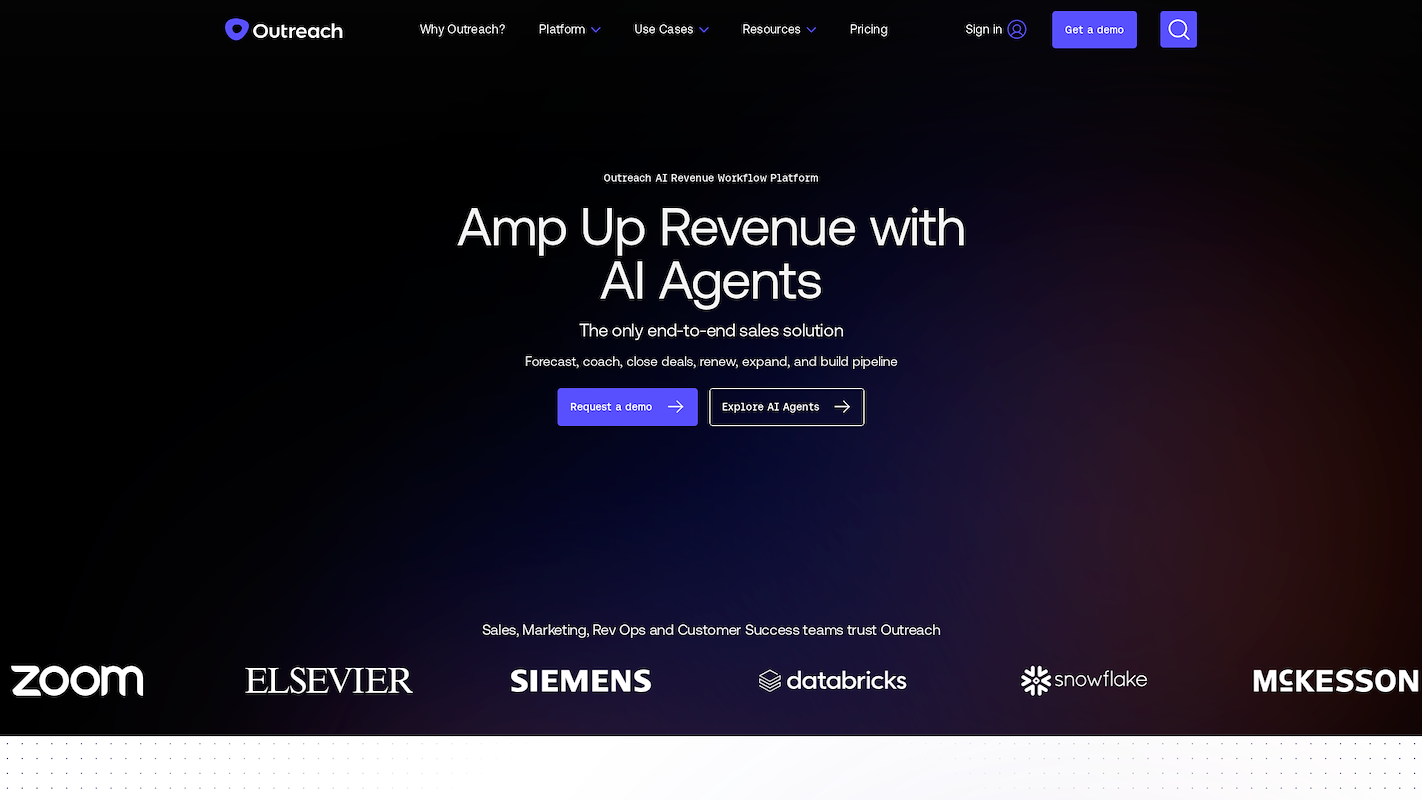
Outreach is a sales execution platform for teams to automate tasks and manage their pipeline. It provides a workspace for sales representatives to execute their workflow. The platform captures customer interactions from email, voice, and social media, which centralizes communication records.
It also offers insights from sales activities to inform strategy and improve the sales process. This approach helps teams concentrate on revenue targets.
Outreach's Main Features
- Deploys AI agents across the sales cycle to assist with forecasts, manage deals, and coach teams.
- Provides real-time guidance on buyer questions during live calls using Kaia content cards.
- Uses an AI forecast engine to improve prediction accuracy and simulate different scenarios.
- Extracts action items from meetings and automatically generates personalized follow-up messages.
How Outreach Compares to Rattle
Average Review score: 4.3/5 stars based on 3,479 G2 reviews.
- Outreach provides a complete sales engagement workspace for reps to manage their outreach. This is different from Rattle, which focuses on sending CRM alerts to Slack.
- It offers real-time AI guidance during sales calls to help reps with buyer questions. Rattle does not analyze conversations and instead sends notifications based on CRM data.
- The platform uses an AI engine for sales forecasting to help predict revenue. This provides a strategic view, while Rattle gives operational updates based on set rules.
- This tool automatically finds action items from meetings and creates follow-up messages. Rattle's main job is to sync data and send alerts, not to process meeting content.
Potential Downsides of Outreach vs. Rattle
- Outreach does not provide a deep, two-way sync with chat applications. In contrast, Rattle lets teams update Salesforce records directly from Slack, which can be faster for simple data entry tasks.
- The platform is not designed to send granular, real-time operational alerts from a CRM into a chat tool. Rattle excels at this, sending specific notifications for deal updates or data hygiene reminders.
- Some teams may find the tool's wide feature set excessive if they only need to connect their CRM to Slack. Rattle presents a more focused and often more cost-effective choice for that specific function.
Pricing and Cost-Effectiveness
Outreach does not publish its pricing, but its perceived cost is high, reflecting its comprehensive platform. This makes it a more significant investment than Rattle's specialized tool. For the most accurate pricing, we recommend visiting Outreach's official website.
5) Salesloft
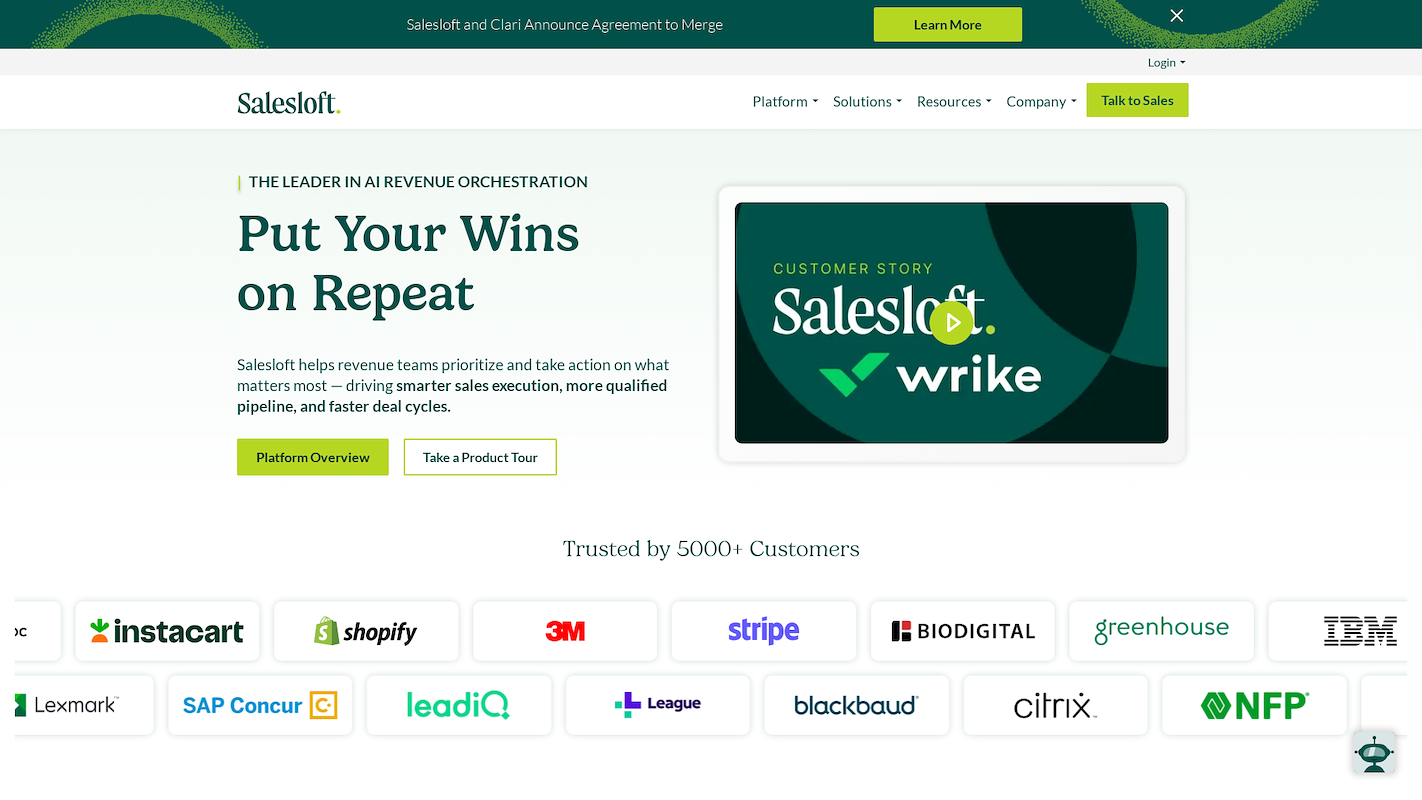
Salesloft is a sales engagement platform for revenue teams to execute their go-to-market plans. It offers a workspace for sellers to handle daily tasks, from first contact to a closed deal. The platform assists with pipeline creation and deal management.
It automates some sales activities and provides data to guide strategy and boost seller performance.
Salesloft's Main Features
- Uses an AI-driven engine called Rhythm to convert buyer signals into prioritized seller actions.
- Provides conversation intelligence and coaching with real-time AI insights from calls and meetings.
- Offers deal and opportunity management with AI insights into risk, next steps, and acceleration tactics.
- Includes Drift AI Chat Agents for real-time, personalized website chat that converts visitors into qualified leads.
How Salesloft Compares To Rattle
Average Review score: 4.5/5 stars based on 4,145 G2 reviews.
- Salesloft offers a complete sales engagement workspace for reps to manage outreach. This differs from Rattle, which primarily sends CRM-based alerts to Slack.
- It includes conversation intelligence and coaching tools that analyze call recordings for performance insights. Rattle does not offer a similar function for sales performance analysis.
- The platform uses an AI engine to prioritize seller actions based on buyer signals. In comparison, Rattle sends notifications based on predefined rules set up in the CRM.
- This tool provides detailed analytics on sales activities, such as email open rates and link activity. Rattle focuses on sending alerts and does not provide this level of engagement analysis.
Potential Downsides of Salesloft vs. Rattle
- Salesloft does not offer a deep, two-way sync with chat applications. In comparison, Rattle allows teams to update Salesforce records directly from Slack, which can be faster for simple data entry tasks.
- The platform is not built to send granular, real-time operational alerts from a CRM into a chat tool. Rattle excels at this, sending specific notifications for deal updates or data hygiene reminders directly into Slack.
- Some teams may find the tool's wide feature set excessive if their main goal is to connect a CRM to Slack. Rattle presents a more focused solution for this specific function, which can result in a simpler implementation.
Pricing and Cost-Effectiveness
Salesloft does not publish its pricing, but its perceived cost is high, reflecting its comprehensive platform. This makes it a more significant investment than Rattle's specialized tool. For the most accurate pricing, we recommend visiting Salesloft's official website.
Book a Demo with 11x
If you are interested in digital workers for your sales team, consider 11x. Our AI agents handle prospecting, outreach, and CRM updates. This frees up your team to focus on closing deals. Book a demo to learn more about our platform.
At 11x, we use AI to run your sales playbook. Alice finds accounts, enriches their data, and handles outreach, while Julian qualifies inbound leads and books meetings. We consolidate data enrichment and email warmup into one platform, so you do not need separate point solutions.
Book a demo to see how our AI agents work.
6) Revenue Grid
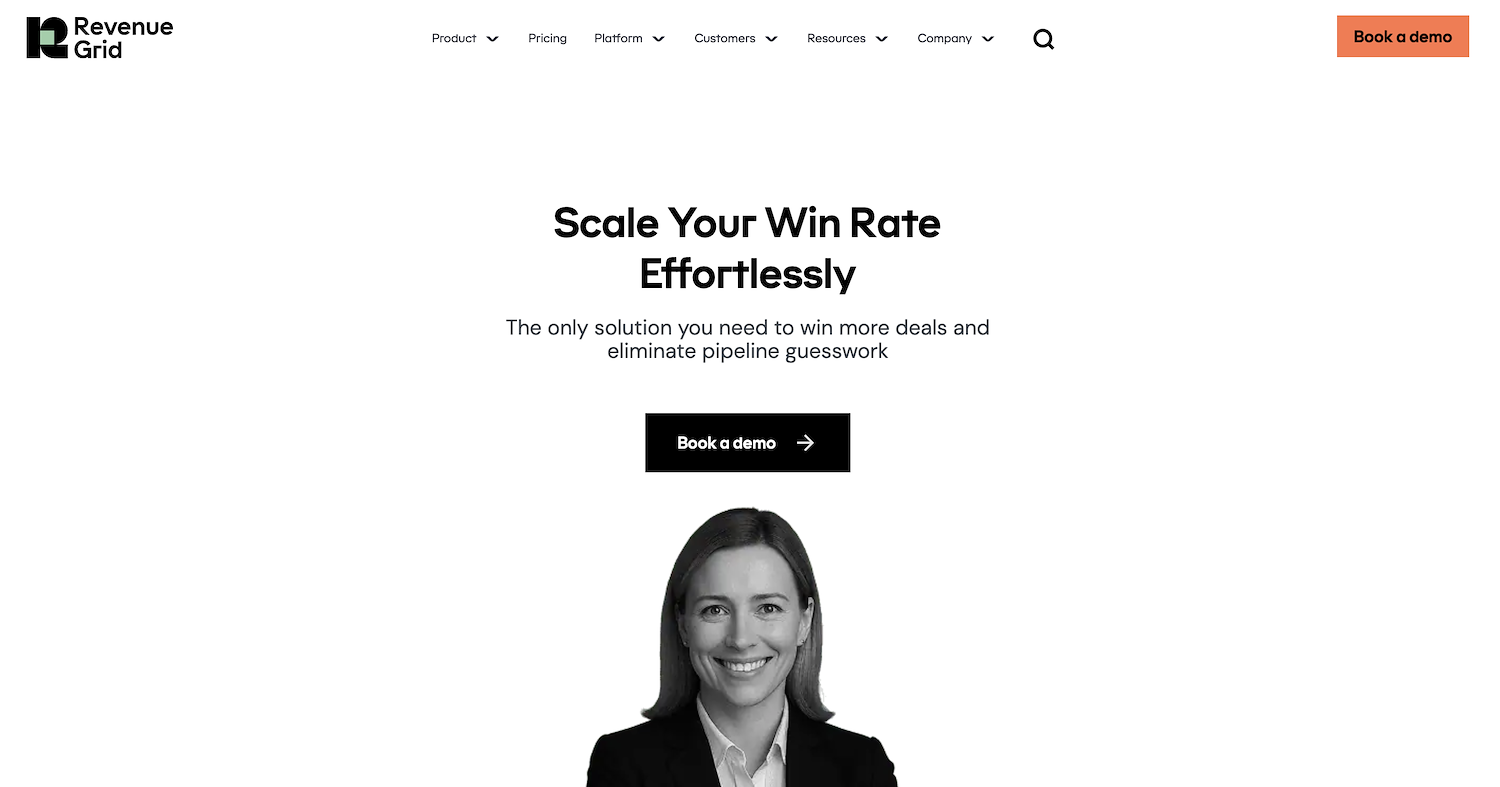
Revenue Grid is a revenue operations platform that captures sales activity data. It collects information from emails and calendars to automatically update your CRM records. This provides a complete view of customer communications.
The system offers tools for pipeline inspection and sales forecasts. It helps sales teams maintain a standard process and spot deals that need attention, which supports overall sales productivity.
Revenue Grid's Main Features
- Automatically captures sales activities and leads to Salesforce and includes an inbox sidebar to access CRM data from email.
- Offers multichannel sales sequences with personalization options for outreach campaigns.
- Provides AI-driven sales forecasting and delivers contextual, interactive alerts called Revenue Signals.
- Includes a conversational AI called Mentor that answers questions and suggests next steps directly within the CRM.
How Revenue Grid Compares To Rattle
Average Review score: 4.5/5 stars based on 512 G2 reviews.
- Revenue Grid automatically captures sales activities from emails and calendars to enrich CRM data. This provides a more complete activity log compared to Rattle, which sends alerts based on data already in the CRM.
- It offers AI-driven sales forecasting to help predict revenue. This is different from Rattle, which operates on predefined rules to send notifications instead of generating predictive insights.
- The platform delivers contextual, interactive alerts called Revenue Signals. These AI-driven notifications offer more guidance than Rattle's alerts, which are based on predefined rules.
- Its conversational AI, Mentor, answers questions and suggests next steps directly within the CRM. Rattle does not have a similar feature to provide real-time, AI-powered sales assistance.
Potential Downsides Of Revenue Grid Vs. Rattle
- Revenue Grid does not offer a deep, two-way integration with chat tools. In contrast, Rattle allows users to update CRM records directly from Slack, which some teams may find more efficient for quick data entry.
- The tool's alerts, called Revenue Signals, are AI-driven and appear within the CRM. This is different from Rattle, which sends user-defined, operational alerts directly into a chat application for immediate team visibility.
- Its implementation can be more complex, as some users report a setup time of around two months. Rattle, as a more focused tool, often has a quicker setup process for its specific use case.
Pricing and Cost-Effectiveness
Revenue Grid does not publish its pricing, but user reviews indicate a high perceived cost. For the most accurate pricing information, we recommend visiting Revenue Grid's official website to request a quote.
7) Apollo.io
Apollo.io is a sales intelligence platform. It combines a large B2B contact database with tools for sales engagement. Teams use it to find potential customers, run outreach campaigns, and manage their initial prospect workflow in one place.
Apollo.io's Main Features
- Provides a database with contact and company information for prospecting.
- Includes tools to build and automate multi-step outreach sequences that use email and calls.
- Offers analytics to measure the performance of sales campaigns and activities.
- Uses an AI assistant to help write emails and suggest effective messages.
How Apollo.io Compares To Rattle
Average Review score: 4.8/5 stars based on 9,179 G2 reviews.
- Apollo.io provides a B2B contact database for prospect discovery. Rattle does not offer contact data and instead works with information already inside your CRM.
- The platform is built for sales engagement and top-of-funnel outreach. In contrast, Rattle focuses on operational alerts and data updates for deals already in the pipeline.
- It includes native tools for email sequences and calls. Rattle is an integration tool that connects a CRM to a chat application, not an outreach platform.
- Apollo's main function is to help find and engage new leads. Rattle's main function is to improve data hygiene and visibility for existing deals within a sales team.
Potential Downsides Of Apollo.io Vs. Rattle
- Apollo.io is not designed to send real-time, operational alerts from a CRM to a chat tool. Rattle is built specifically for this purpose and provides immediate notifications in Slack.
- The platform does not offer a two-way sync that allows users to update CRM records from a chat application. This feature is a core part of Rattle's workflow for many teams.
- For teams that only need to improve CRM data hygiene and deal visibility in Slack, Apollo.io's features may be unnecessary. Rattle offers a more targeted solution for this specific need.
Pricing and Cost-Effectiveness
Apollo.io offers public pricing with several tiers, including a free plan. This makes it accessible for teams of different sizes. For teams that need both contact data and engagement tools, it can be a cost-effective option. For exact details, visit Apollo.io's pricing page.
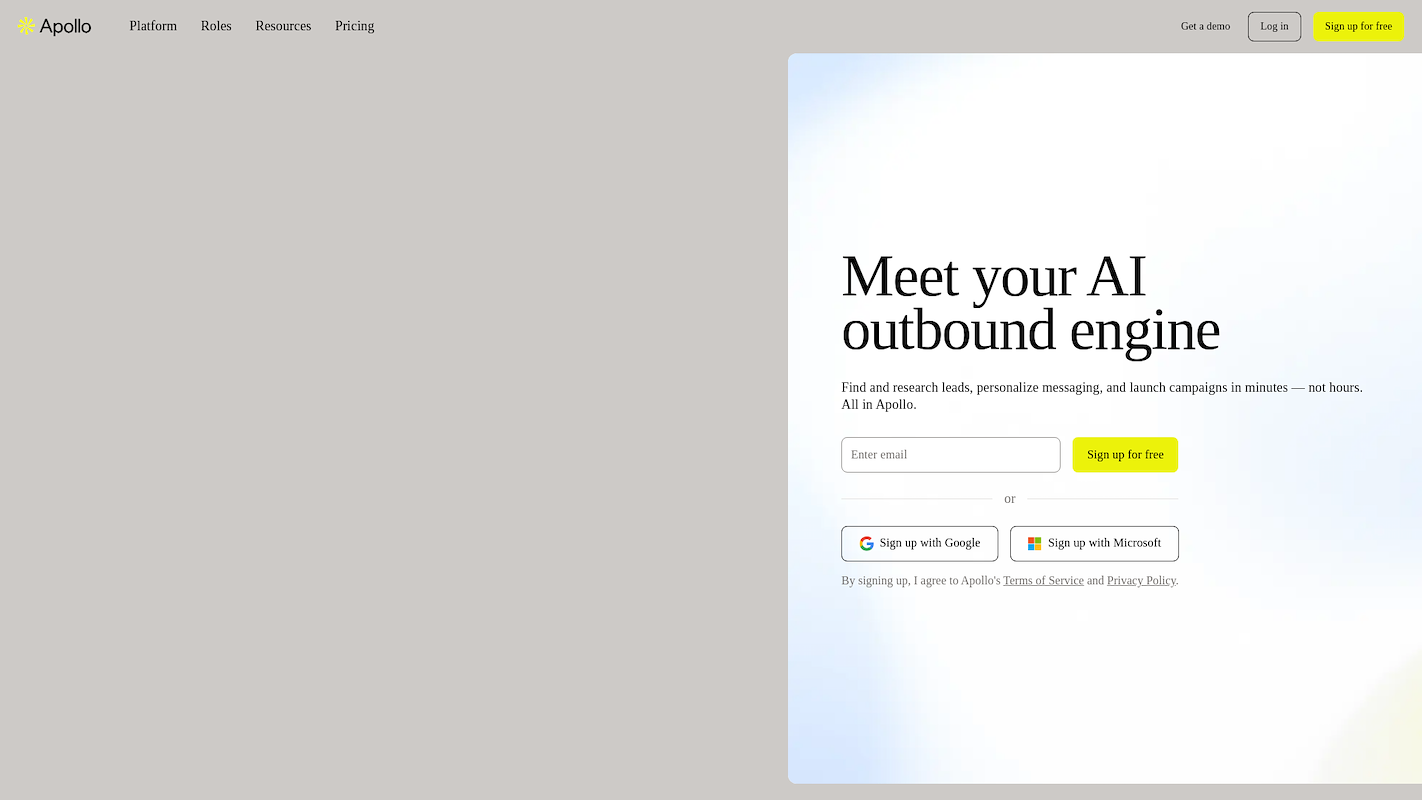
Apollo.io is a sales intelligence platform for go-to-market teams. It provides a large B2B database to find prospects and tools to execute outreach. The system unifies prospect discovery, sales engagement, and initial workflow management to support top-of-funnel activities.
Apollo.io's Main Features
- Provides a B2B database with contact and company information for prospecting.
- Includes tools to build and automate multi-step outreach sequences using email and calls.
- Offers analytics to measure the performance of sales campaigns and activities.
- Uses an AI assistant to help write and suggest effective email messages.
How Apollo.io Compares To Rattle
Average Review score: 4.7/5 stars based on 8,904 G2 reviews.
- Apollo.io provides a B2B contact database with over 210 million contacts for prospect discovery. This is different from Rattle, which works with information already inside your CRM and does not offer contact data.
- The platform is built for sales engagement with native tools for email sequences and calls. In contrast, Rattle is an integration tool that connects a CRM to a chat application, not an outreach platform.
- It helps find and engage new leads at the top of the sales funnel. Rattle's main function is to improve data hygiene and visibility for existing deals already in the pipeline.
- This tool offers lead enrichment to add more details to your prospect data. While Rattle helps maintain data hygiene through alerts, Apollo.io actively adds new information to your contacts.
Potential Downsides Of Apollo.io Vs. Rattle
- Apollo.io does not send operational alerts from a CRM to a chat tool in real time. In comparison, Rattle excels at this by sending instant Slack notifications for new deals or tasks that need attention.
- The platform lacks a two-way sync to update CRM records from a chat application. Some teams prefer Rattle for this, as it allows them to change a deal stage or log a note directly inside Slack.
- Its features may be excessive for teams that only need to improve CRM data hygiene in Slack. Rattle offers a more focused solution for that specific task, which can result in a simpler user experience.
Pricing and Cost-Effectiveness
Apollo.io offers public pricing with several tiers, including a free plan and paid options starting at $49 per user per month. Rattle does not publish its pricing, though it is often positioned as a cost-effective tool for its specific function. Apollo's transparent model may be a better fit for teams that require predictable, upfront costs.
8) HubSpot Sales Hub
HubSpot Sales Hub is a sales software component of HubSpot's CRM platform. It gives sales teams tools for contact management, deal tracking, and sales automation. The system acts as a central database for customer information and sales activities.
HubSpot Sales Hub's Main Features
- Offers sales automation tools, including email sequences and workflows, to manage outreach.
- Provides a visual deal pipeline to track opportunities through the sales process.
- Includes reporting dashboards to analyze sales performance and forecast revenue.
- Features tools to schedule meetings and track email engagement with prospects.
How HubSpot Sales Hub Compares To Rattle
Average Review score: 4.4/5 stars based on 11,841 G2 reviews.
- HubSpot Sales Hub is a complete sales platform with its own CRM. Rattle is a specialized tool that connects an existing CRM, like Salesforce, to a chat application.
- The platform's main function is to manage the entire sales cycle. In contrast, Rattle focuses on operational alerts and data hygiene for deals already in the pipeline.
- HubSpot includes native tools for sales engagement, such as email sequences and scheduling. Rattle does not offer these features and instead focuses on CRM-to-chat integration.
- While HubSpot has notification capabilities, it is not designed for the granular, real-time Slack alerts that are Rattle's core function.
Potential Downsides Of HubSpot Sales Hub Vs. Rattle
- HubSpot does not offer a deep, two-way sync to update a separate CRM like Salesforce from a chat tool. Rattle is built specifically for this Salesforce-to-Slack workflow.
- For teams committed to Salesforce, implementing HubSpot Sales Hub can introduce data silos or require a full migration. Rattle integrates with an existing Salesforce setup without replacement.
- The platform's broad feature set may be more than what is needed for teams that only want to improve deal visibility in Slack. Rattle provides a more direct solution for this use case.
Pricing and Cost-Effectiveness
HubSpot Sales Hub has public pricing with several tiers, including free tools. Paid plans can become costly as teams and feature needs grow. For specific details, we recommend visiting HubSpot's pricing page.
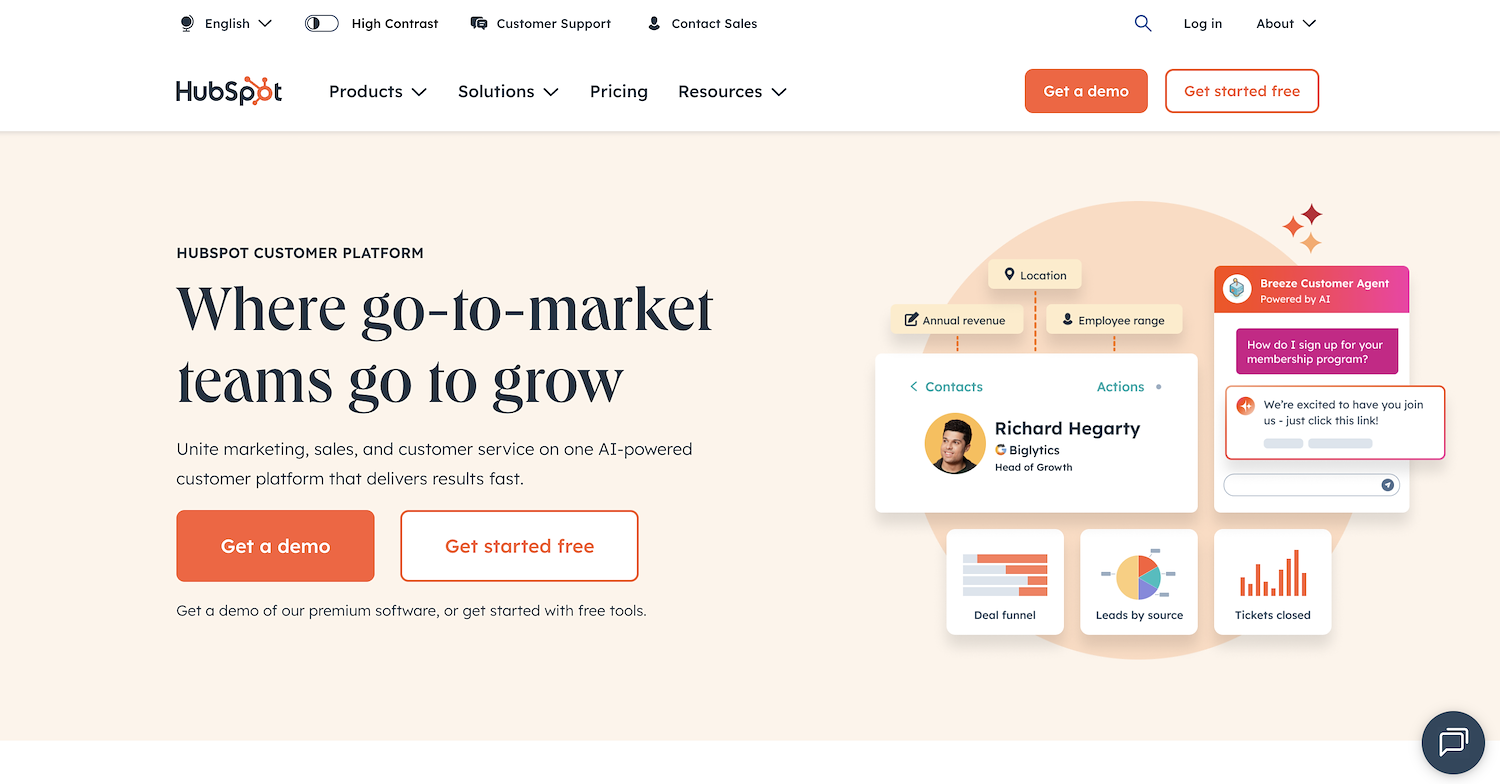
HubSpot Sales Hub is a sales software inside the HubSpot CRM platform. It offers tools for contact management, sales automation, and deal supervision with a visual pipeline. The system is a central database for customer data and sales activities, with dashboards for analysis and forecasts.
HubSpot Sales Hub's Main Features
- Offers sales force and marketing automation for email and campaign management.
- Manages contacts, accounts, opportunities, and sales pipelines.
- Includes customer support and case management tools.
- Provides mobile user support and social collaboration features.
How HubSpot Sales Hub Compares To Rattle
Average Review score: 4.4/5 stars based on 12,407 G2 reviews.
- HubSpot Sales Hub is a complete sales platform with its own CRM. This differs from Rattle, which is a specialized tool that connects an existing CRM to a chat application.
- It includes native tools for sales and marketing automation, such as email sequences. In comparison, Rattle sends alerts based on CRM data and does not offer outreach campaign features.
- The platform provides customer support and case management tools. This helps teams manage post-sale issues in one place, a function that Rattle does not cover.
- This tool offers a visual deal pipeline to track opportunities. This gives a different view compared to Rattle, which sends text-based alerts about deal progress to a chat application.
Potential Downsides Of HubSpot Sales Hub Vs. Rattle
- HubSpot Sales Hub is its own CRM, so it does not natively connect to Salesforce for two-way chat updates. In contrast, Rattle works inside an existing Salesforce environment, which avoids the need to manage two separate systems.
- The tool's notification system is part of a larger platform and may not offer the same level of granular, custom alerts as Rattle. Rattle specializes in sending specific, rule-based notifications from Salesforce to Slack for operational tasks.
- For teams that only need to connect Salesforce with Slack, this platform's extensive features can be excessive. Rattle offers a more targeted solution focused on CRM-to-chat integration, which can simplify adoption for that specific use case.
Pricing and Cost-Effectiveness
HubSpot Sales Hub has public pricing with paid plans starting at $20 per seat per month, while Rattle does not publish its pricing. This gives HubSpot more cost predictability. For detailed costs, visit HubSpot Sales Hub's official website.
9) BoostUp.ai
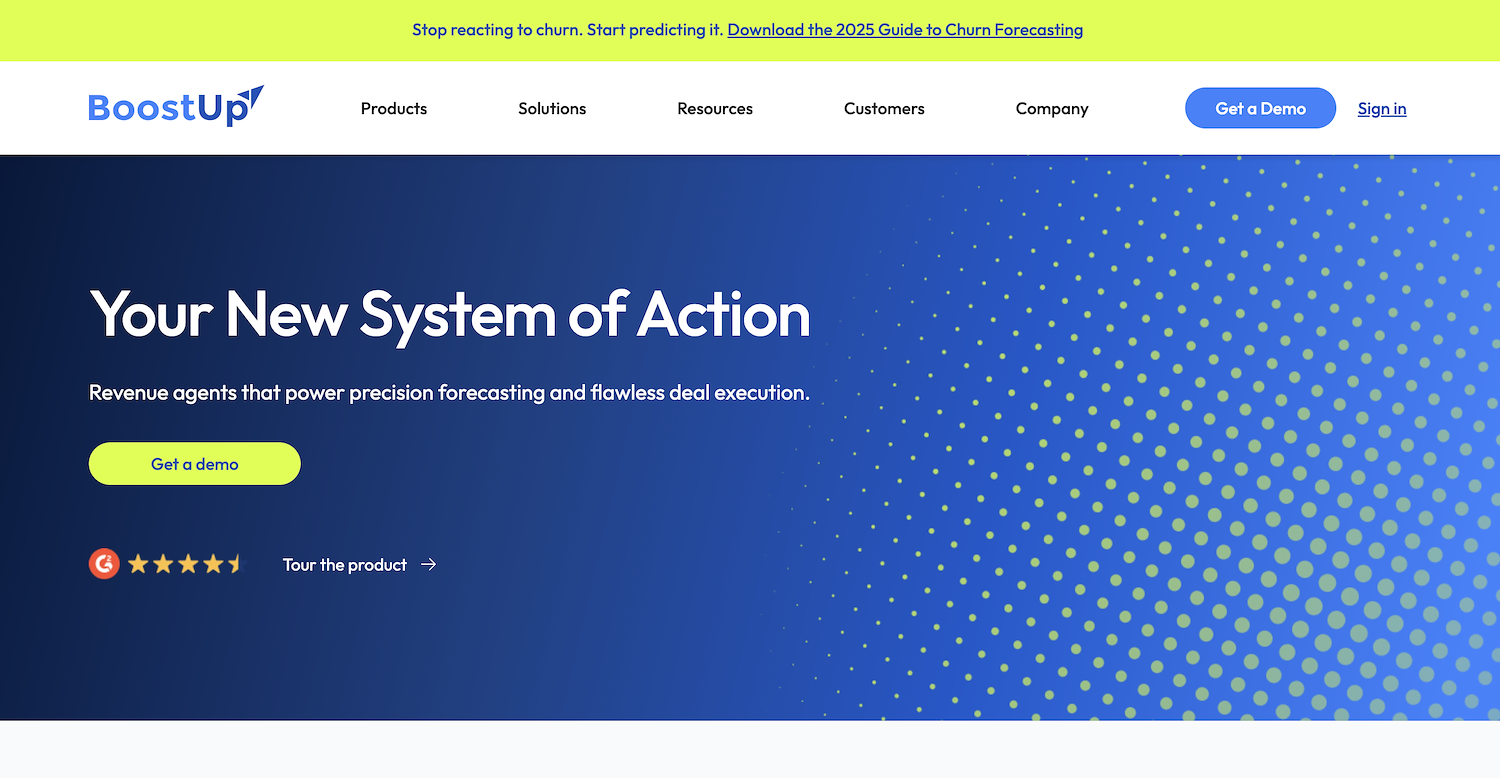
BoostUp.ai is a revenue operations and intelligence platform. It captures sales activity data from sources like email and your CRM. The system offers insights for deal health and forecasting. It helps revenue teams manage their pipeline and identify risks, which supports a more predictable sales process.
BoostUp.ai's Main Features
- Offers predictive analytics, including lead and opportunity scoring, to help with risk analysis.
- Provides revenue sourcing and forecasting tools for sales management.
- Includes live pipeline management with account-based analytics and data visualization.
- Features sales gamification to track and encourage team performance.
How BoostUp.ai Compares To Rattle
Average Review score: 4.4/5 stars based on 611 G2 reviews.
- BoostUp.ai provides predictive analytics for revenue forecasting. This is different from Rattle, which sends alerts based on predefined rules in the CRM and does not generate its own forecasts.
- The platform offers AI-driven risk analysis to identify deals that might not close. In comparison, Rattle notifies teams about deal updates but does not have a specific risk scoring feature.
- It includes sales gamification features to track and encourage team performance. Rattle does not have a similar function, as its focus is on operational alerts and data hygiene.
- This tool provides live pipeline management with data visualization. This gives a broader, more analytical view than Rattle, which sends specific, text-based updates to a chat application.
Potential Downsides Of BoostUp.ai Vs. Rattle
- BoostUp.ai does not offer a deep, two-way sync with chat applications. In contrast, Rattle allows teams to update Salesforce records directly from Slack, which can be faster for simple data entry tasks.
- The platform is not designed to send granular, real-time operational alerts to a chat tool. Rattle excels at this, as it delivers specific notifications for deal updates or data hygiene reminders directly into Slack.
- Some teams may find the tool's wide feature set excessive if they only need to connect their CRM to Slack. Rattle presents a more focused solution, which can result in a simpler implementation process.
Pricing and Cost-Effectiveness
BoostUp.ai does not publish its pricing, but user reviews indicate a high perceived cost. For the most accurate pricing information, we recommend visiting BoostUp.ai's official website to request a quote.
10) Chorus by ZoomInfo
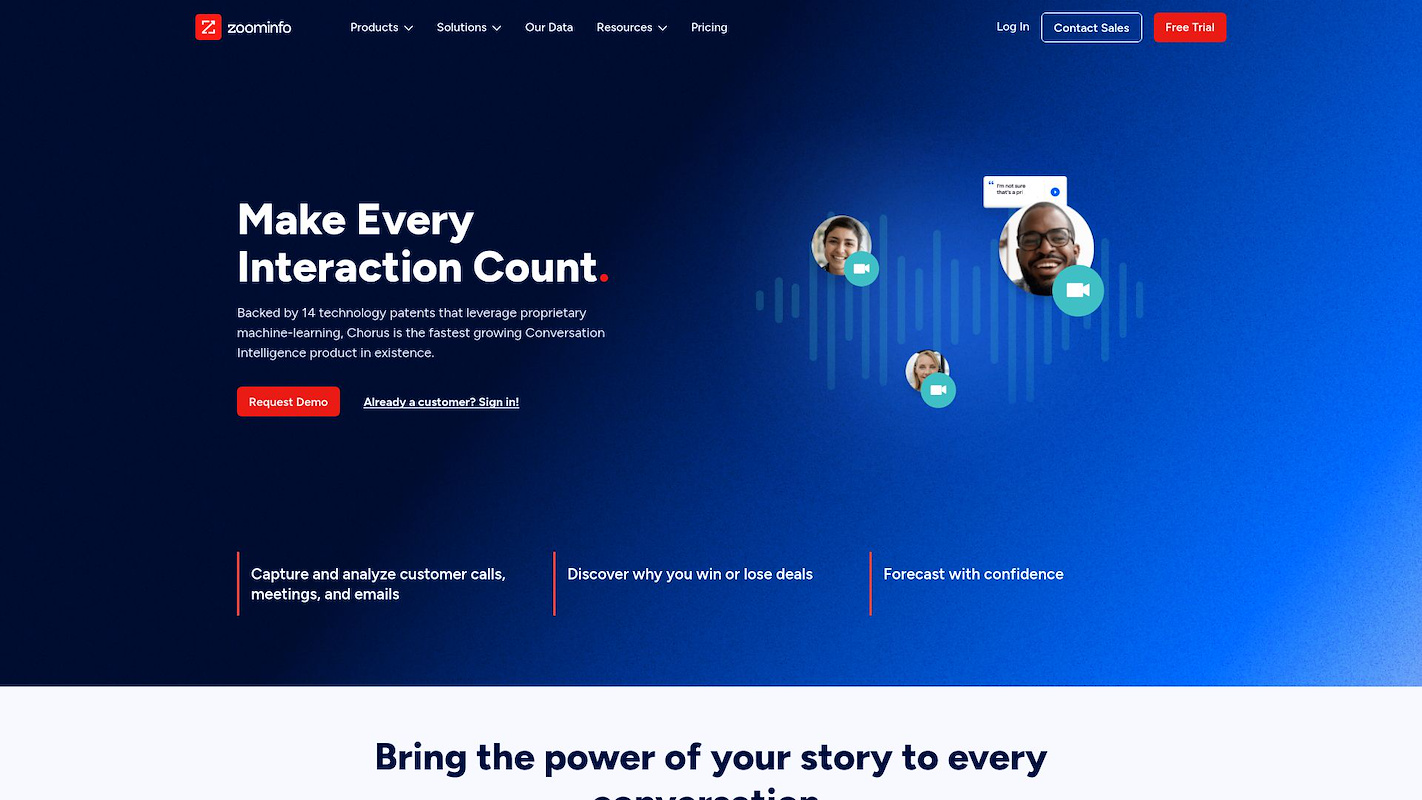
Chorus by ZoomInfo is a conversation intelligence platform that records and analyzes customer interactions. The system transcribes calls, meetings, and emails to surface insights about deals and team performance. This allows managers to review conversations, spot risks, and provide targeted coaching to sales representatives based on actual interactions.
Chorus by ZoomInfo's Main Features
- Records and analyzes customer interactions using speech-to-text technology.
- Provides coaching materials and scorecards for agent performance management.
- Uses machine learning for call analytics and to score customers based on conversations.
How Chorus by ZoomInfo Compares To Rattle
Average Review score: 4.5/5 stars based on 2,972 G2 reviews.
- Chorus by ZoomInfo analyzes customer interactions from calls and meetings to find insights. This provides a deeper look into deal health compared to Rattle, which sends alerts based on CRM data.
- The platform offers sales coaching tools that use data from recorded calls for performance reviews. Rattle does not have a comparable feature for representative development.
- It uses speech-to-text technology to transcribe calls and provide automated summaries. This is different from Rattle, which sends notifications based on predefined rules in the CRM.
- This tool scores customers based on machine learning analysis of their conversations. This provides a predictive view of deal health, while Rattle sends operational alerts based on CRM field updates.
Potential Downsides Of Chorus Vs. Rattle
- Chorus by ZoomInfo does not provide a two-way sync to update CRM records from a chat application. In contrast, Rattle allows users to change deal stages or log notes directly in Slack, which can improve data entry speed.
- The platform is not built to send operational alerts from a CRM to a chat tool. Teams that rely on instant Slack notifications for new deals or required tasks may find Rattle is a better fit for this specific need.
- Its features may be excessive for teams that only need to connect their CRM to Slack. Rattle offers a more targeted solution for that specific function, which can result in a simpler user experience.
Pricing and Cost-Effectiveness
Neither Chorus by ZoomInfo nor Rattle publish their pricing. However, user reviews for Chorus indicate a high perceived cost, while Rattle is often positioned as a more specialized tool. For an accurate quote from Chorus, we recommend visiting its official website.
Which One Should You Go With?
Choosing a Rattle alternative depends on many factors, from your budget to your team's specific workflow. We have presented several options to help you find the right fit for your revenue operations.
If your goal is to automate sales tasks, consider 11x. Our AI agents handle prospecting, outreach, and CRM updates, which allows your sales team to focus on closing deals instead of on administrative work.


